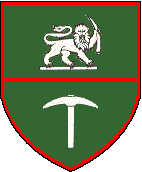




|
|
|
|
1. THE CONCEPT The
concept of ‘pseudo’ insurgents, i.e. members of the counter-insurgency
forces posing as insurgents, is a well established, if lesser known, method of
gathering intelligence and one often used by police units involved in crime
detection. In
practice, select members of the Security Forces are trained in the habits and modus
operandi of their enemy down to the smallest detail. Groups then infiltrate
known insurgent areas, attempting to establish themselves as genuine insurgents.
In counter-insurgency terminology this phase of the operation is known as
‘validification’ and is aimed both at convincing insurgents and members of
the local population of the authenticity of the group. Once
a pseudo team has established its credentials as insurgent forces, the focus
shifts to gathering all available information on insurgents and local support
for them in the area. In this way pseudo operations can contribute substantially
to the total Security Force intelligence picture. In an area where insurgent
presence has already been established, as was the case in north-eastern Rhodesia
in 1973, and where traditional Security Force intelligence sources have been
eliminated through popular support for the insurgent cause, pseudo operations
may prove to be the only reliable source of intelligence. In
most cases success is only possible if the pseudo team contains a number of
former insurgents, recently captured by Security Forces and persuaded to change
sides (‘turned’, in counter-insurgency jargon). Again,
this need not go hand-in-hand with physical intimidation as might seem
necessary. Numerous studies on the motivation of ‘revolutionary’ forces
indicate that ideological commitment to the cause of ‘liberation’ plays a
far less important role in motivation than is generally believed.
(1) Research
has substantiated that there is a willingness among captured insurgent personnel
to change sides in the traumatic post-contact and initial period of capture.
Should a captured insurgent not be presented with obvious means of escape and be
physically involved in counter-insurgency operations on the side of Government
forces he, in effect, becomes committed to the latter cause. With
the aid of these former insurgents, pseudo teams are able to establish contact
with the established insurgent support structures within local communities.
Through the local population, further contact with insurgent groups could also
follow. Information gleaned in this way is passed on to the traditional elements
of the Security Forces for action. Only in very exceptional circumstances would
a pseudo team itself use intelligence obtained to eliminate insurgent forces.
For, if in the latter case, the operation is not entirely successful, the pseudo
team would immediately risk being exposed as government forces and thus lose all
prospect of gaining intelligence. However,
if the strategy is to survive, it needs to be tightly controlled and limited in
practice. Once members of the local population and insurgents become aware of
the strategy, their security
becomes stricter and further validification and establishment of pseudo teams
becomes increasingly difficult. There is the danger, also, that pseudo
operations may be used as license for transgression of the law. If the two
factors are combined and members of the local population become aware of
Security Forces posing as insurgents and committing crimes in this guise, the
real insurgent forces are presented with an ideal propaganda weapon. At such
time both Security Forces and the Government are likely to lose some of their
claim to legitimacy that seems a natural product of their position as enforcers
of, and compliers with, the law.
|
|
|